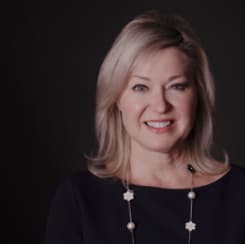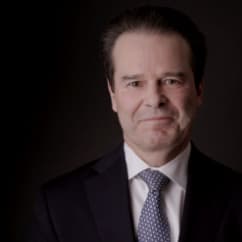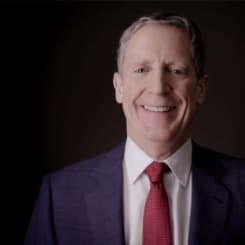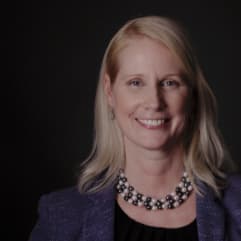The regional transit strategy that the GTAA is helping to shape calls for stronger links between the Airport Employment Zone (AEZ) and other economic zones across Southern Ontario, particularly in the regions of Peel, York, Durham and Waterloo. Creating better connections among clusters of business, research and educational activity is crucial for encouraging investment, increasing access to talent and fuelling overall productivity and growth.
I appreciate that the GTAA thinks about Toronto Pearson as far more than a place where planes land and take off. The airport is an economic driver. And the organization behind it must be a steward of the environment, as well as a responsible citizen of this community, this province and this country – with accountabilities and obligations that go well beyond gate-time metrics.
Iain Klugman, CEO, Communitech
Among those advocating for better solutions is Connect the Corridor, an alliance of leading businesses in the Toronto-Waterloo Innovation Corridor. Generating nearly a fifth of Canada’s GDP, the Corridor employs more than 200,000 tech workers – a concentration of talent second only to California’s Silicon Valley. It’s also home to Canada’s advanced manufacturing supercluster, as well as 16 post-secondary institutions. But when it comes to transportation networks, this vital economic zone has too many congested roads and offers commuters few efficient transit options.
Connect the Corridor proposes a significant extension of the GO commuter rail network, with frequent, 24/7 service. We spoke to the group’s chair, Iain Klugman – CEO of Waterloo-based Communitech, one of Canada’s top not-for-profit innovation hubs – on the need for greater connectivity and the value of collaboration.
 Connect the Corridor proposes a significant extension of the GO commuter rail network.
Connect the Corridor proposes a significant extension of the GO commuter rail network.
What is the vision driving Connect the Corridor?

Iain Klugman: We see a tremendous opportunity to unleash the economic potential of smaller cities across the province – centres like London, Hamilton, Kingston, Windsor and Kitchener-Waterloo. The inhibitor largely comes down to transportation, the movement of people. Companies in the Waterloo region need to tap into the Toronto talent market. We could be growing a whole host of scale-up companies and turning them into hundred-million or even billion-dollar businesses, but for the lack of access to talent. At the same time, there’s tremendous potential to inspire Toronto with the entrepreneurial drive that’s so central to who we are as a community.
The Region of Waterloo has earned a global reputation as a centre of innovation. What’s been the key to its success?
If you look back over the last 200 years, this region has created some of the largest companies in Canada. In distilling, food processing, insurance, auto parts, manufacturing – and more recently, technology. We’ve been able to do all of these remarkable things because we’re ambitious, we’re entrepreneurial and we’re collaborative. We realize that we’re a small community, barely 600,000 people, so we can’t compete unless we work together as a team. That’s the only way we’re going to win – by ganging together to form collaboratives and take on the world.
So the transit solution you propose will leverage the existing GO network?
Yes. Right now the GO train service is focused on carrying people into Union Station in the morning and back home at night. But there are actually more commuters coming to Kitchener-Waterloo every day than travel from our region into Toronto. And our members tell us that being able to reach Toronto Pearson more easily via GO service would be almost as valuable as the ability to access Union Station throughout the day. So the short-term answer is to get GO working for us – though at the same time we need to have some bigger, visionary conversations about high-speed rail across Southern Ontario, and also how we’re going to meet future air travel needs.
There are many stakeholders in this conversation, including governments, transit providers and advocacy groups. How do you find common ground?
There are groups coming at this for different reasons. Some are talking about how excess road traffic is creating a huge economic drag; it’s not unleashing the potential of the corridor and communities beyond. Other people are focused on safety, or environmental impacts. But at the end of the day, there’s a common commitment around the fact that we’re not capitalizing on the opportunities we’ve got, and unless we do something significant, it’s only going to get worse. Especially when both Toronto and the Waterloo region are growing so fast. The good news is that we’ve got a very practical government that’s not waiting for a giant solution but instead is saying, “There are things we can do right away, through various partnerships, to make a difference.”
How do you see the GTAA’s role in advancing a regional transit strategy?
I appreciate that the GTAA thinks about Toronto Pearson as far more than a place where planes land and take off. The airport is an economic driver. And the organization behind it must be a steward of the environment, as well as a responsible citizen of this community, this province and this country – with accountabilities and obligations that go well beyond gate-time metrics.
What’s interesting about how the GTAA has led this transit initiative is that there are so many shapes and sizes of organizations coming together. Whether you’re a small not-for-profit or a large company, what’s important is that each of us brings something to the conversation and contributes to the objective. I can sit in a room with a CEO and a board chair and the Premier of Ontario, and we’re all members of the same team. We have a responsibility to work together and try to move the needle on important issues.








